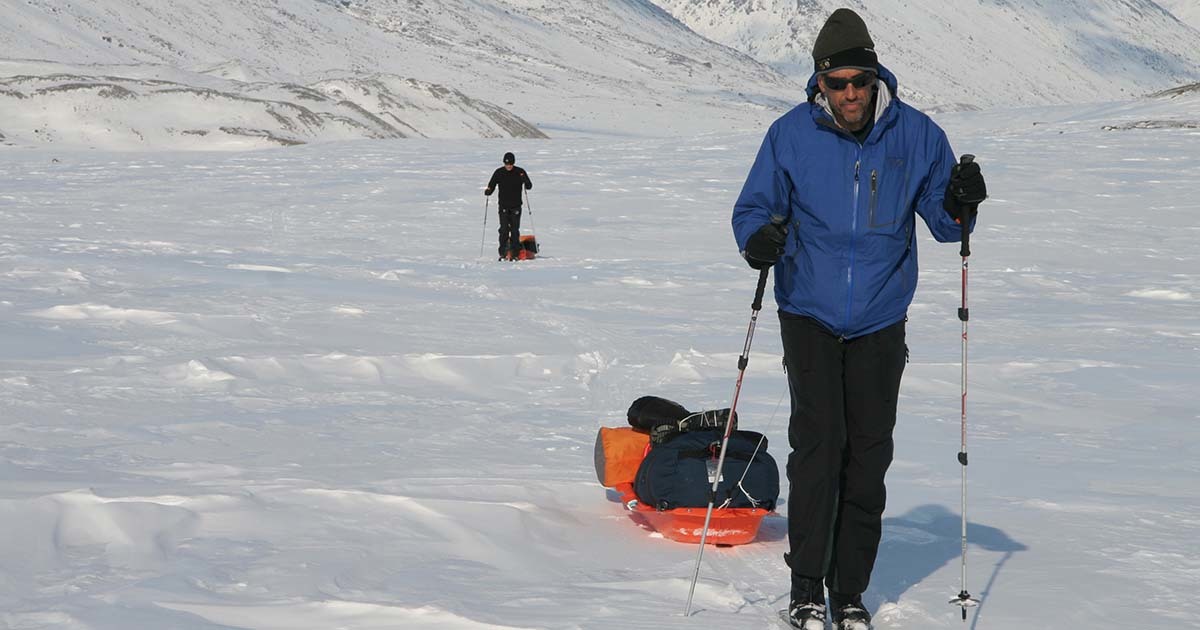Knowledge Is Power
Jenna Olney’s background in occupational therapy afforded her unique insight to her treatment at the Musculoskeletal Institute
Reviewed by: Jenna Olney and Karl Koenig, MD, FAOA, FAAOS, FAAKHS
Written by: Lauren Schneider

Ever since Jenna Olney was a child, pain in her left hip made walking a challenge. While these difficulties were first attributed to growing pains, she was diagnosed at age five with Legg-Calvé-Perthes disease, a rare condition in which tissue in the hip joints do not receive adequate blood supply. The resulting structural abnormalities caused Jenna pain and limited her mobility and flexibility.

Now 38, she says this childhood diagnosis influenced her decision to become an occupational therapist. “Some of my very favorite people that I got to encounter as a child were the people I got to swim with, and the people I got to make fun things with. Those people were my physical and occupational therapists, so here I am today.”
Because of her career background, Jenna was empowered to take an active role in her care which included a hip replacement at UT Health Austin’s Musculoskeletal Institute.
Preserving what matters
Jenna always knew that she would require a hip replacement once she reached her thirties. When her condition began to worsen last year, she knew that the time had come. “It became painful to even sweep and mop the floor. Rather than just walk normally upstairs, I had to swing my leg around to go up the stairs, which is known as circumduction.”
After consulting with other physicians, who discovered additional irregularities in the socket of her hip joint, she was referred to Karl Koenig, MD, who serves as the Medical Director of the Musculoskeletal Institute.
“When I first talked to Dr. Koenig, he asked me about my goals,” says Jenna. “I said that my first goal was to be there for my children and do the things that my kids need me to be a part of. My second goal was to get back to the things that I love to do like hiking and exercising. My third goal was to not be in pain anymore.” With these goals in mind, Dr. Koenig performed a total hip replacement on Jenna in November 2021.
Patience and flexibility
Hip surgery was only the beginning of Jenna’s journey back to health; she began physical therapy at a practice in Lakeway shortly after her procedure.

At first, she hoped to bounce back quickly and began an aggressive physical therapy regiment focused on strengthening. Dr. Koenig says this is typical for younger patients who undergo hip replacement. “Young patients have very high levels of activity and put a lot of demand on their hip.”
“Come January, I had this night-and-day experience where I was in excruciating pain again,” says Jenna. “I wondered if something had happened, so I immediately visited Dr. Koenig. I told him this is not what I signed up for.”
She says that Dr. Koenig reminded her that even though she had high expectations for herself, she would need to be patient during her recovery and that he would be there to help throughout the process.
After receiving a cortisone injection to alleviate her swelling, Jenna drew from her occupational therapy background to reconsider her approach to physical therapy. Prior to her surgery, her left leg was slightly shorter than her right leg; the left leg was lengthened during the hip replacement to reduce this discrepancy. The initial focus on strengthening her left leg served to shorten those muscles, which was unsuitable now that this leg was longer. By pivoting to exercises that lengthened her left leg muscles, Jenna was able to regain mobility.
A professional perspective

Looking back on the goals she shared with Dr. Koenig before surgery, Jenna says that together they “checked all the boxes” and she now enjoys an active lifestyle, citing a hike she took with her husband last summer on Catalina Island during which the couple scaled a 65-story incline. Jenna is grateful to Dr. Koenig for staying in touch throughout her recovery.
“It was a unique opportunity to interact with another musculoskeletal professional who deals with patients in their recovery process after injury and surgery,” says Dr. Koenig about the experience.
“She was a delight to work with and has a powerful perspective on both the healthcare system and her own care as someone else who works in the healthcare profession.”
He also praises Jenna’s dedication to own progress. “Due to her very hard work with physical therapy to get herself back to her desired activity levels, she’s had a remarkable recovery.”
For more information about the Musculoskeletal Institute or to schedule an appointment, visit the clinic’s page or call 1-833-UT-CARES (1-833-882-2737).
